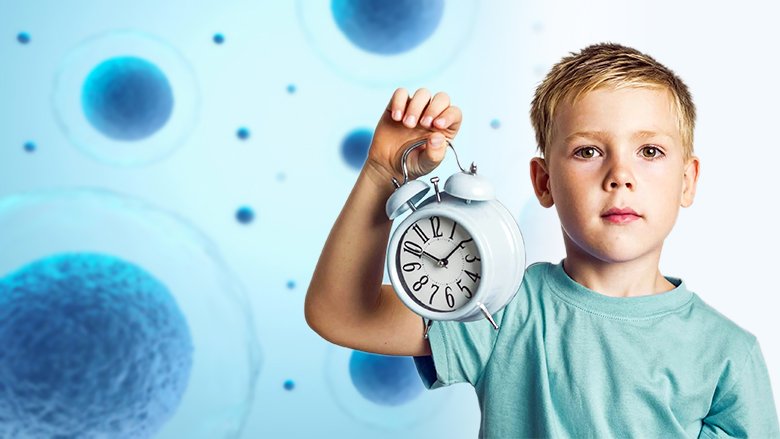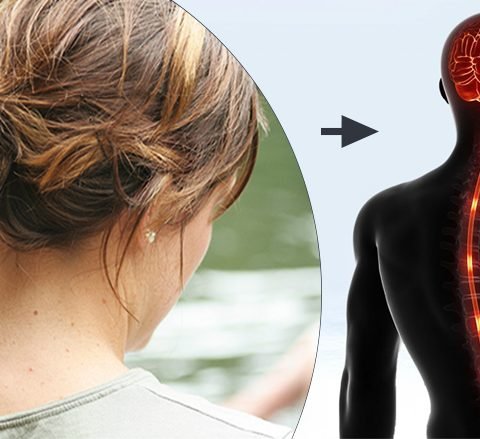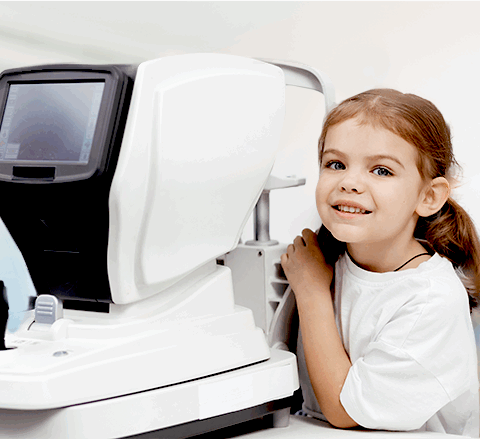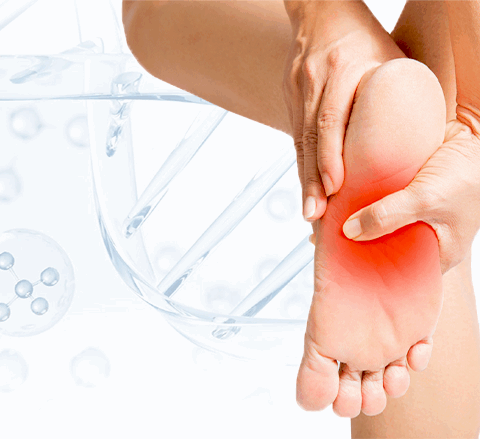📅 Published on: July 15, 2024 | 🔄 Updated on: December 18, 2025 | By: Stem Cell Care India

There have been several medical cases in the past few years and those cases are of global developmental delays. This medical condition refers to that situation in which a child can’t develop certain things such as motor skills, speech, cognitive skills, and social & emotional development. Typically, these delays are observed in children under the age of five. These developmental milestones are known to various growth stages and abilities that most of the children can easily reach at a specific age, including walking, talking, and interaction with others.
One or more areas of development can be impacted by this medical condition. It is important to know that the pace of growth of your children is good and normal. However, if you ever witness the delay in developmental milestones, then they might be suffering from GDD. For example, A child who gets difficulty in learning to walk, sit, crawl or understand any language can be the signs of GDD.
Early intervention of global developmental delays is very important to get a better treatment to treat this disorder. In early intervention programs, the affected children and their families get exceptional support and resources which help them to improve developmental outcomes. Doctors will add various things in the program such as physical therapy, speech therapy, and special education service according to the child’s needs
The main role who plays in the improvement of a child’s development is their parents and caregivers. The environment they provide is very supportive and stimulating that encourages the efforts of the child. The treatment process might be slow but the parent should know that it takes consistency to get the best result because each step towards a healthy life is an achievement in itself. A better treatment can change your child’s life and save them from this medical disorder.
Global developmental delta can affect the various sectors of your body such as motor skills, speech and language, cognitive abilities, and emotional skills. It might take longer to learn to walk, talk, or interact with others for those children who are suffering from this condition. The effects of GDD may not be experienced in the early days but can be noticeable in a few years of life. This can be caused due to several factors such as genetic disorder, prenatal and perinatal complications, infections, and environmental influences. Find out the symptoms in its early stage can help childrens to achieve their full potential. Early diagnosis can help the patient to know about the condition of the GDD to get a suitable treatment before it gets worse. An Individual may experience various symptoms which are:
- Motor Skills
- Delayed sitting, crawling, or walking.
- Poor coordination and balance.
- Difficulty with fine motor tasks like holding a spoon or picking up small objects.
- Speech and Language
- Limited vocabulary for their age.
- Difficulty forming sentences.
- Trouble understanding and following instructions.
- Cognitive Skills
- Difficulty solving problems or understanding concepts.
- Slow to learn new skills and information.
- Challenges with memory and attention.
- Social and Emotional Skills
- Difficulty interacting with peers.
- Limited interest in playing with others.
- Trouble expressing emotions appropriately.
- Adaptive Skills
- Challenges with daily activities like dressing, feeding, or toileting.
- Difficulty adapting to changes in routine.
- Dependence on caregivers for age-appropriate tasks.
Parents and caregivers should seek professional help if they notice any of these symptoms to provide the necessary support and resources.
A medical condition which is known as global developmental delay can be shown in children. The effects of this condition can be witnessed significantly. Children get difficulty in various areas and it can be identified around 5 year of age. There are different types of GDD which include motor skills delays, speech and language delay, cognitive delay, and many more. We discuss all the types in this section. You have to know how many types there are and which one your cold is suffering from. Let’s take a deep breath and read the information we provide. The types of GDD are as follows:
- Motor Skills Delay: Difficulty with movement and coordination, such as sitting, crawling, walking, or using hands effectively.
- Speech and Language Delay: Challenges with understanding and using language, including difficulties with speaking, listening, and communicating effectively.
- Cognitive Delay: Problems with thinking skills, such as learning, reasoning, problem-solving, and memory.
- Social and Emotional Delay: Difficulties in interacting with others, understanding social cues, managing emotions, and forming relationships.
- Fine Motor Delay: Trouble with small movements, particularly with hands and fingers, which affects activities like writing, buttoning clothes, or using utensils.
- Gross Motor Delay: Issues with larger movements involving arms, legs, or the whole body, impacting activities like running, jumping, or balancing.
- Adaptive Skills Delay: Struggles with daily living skills, such as dressing, feeding, or personal hygiene.
- Sensory Processing Delay: Challenges in receiving and responding to sensory information, which can affect how a child experiences touch, sound, sight, and movement.
You can say that the causes are different and easily categorized into factors such as genetic, environmental, and other factors. If you know the cause of the GDD, then it will help you while taking the treatment. The identification of causes will assist to get the appropriate interventions and support which helps the patient to get better. Children who are suffering from GDD can experience various challenges such as difficulties with coordination and movement, delays in learning or speaking, problems with memory and attention, etc. Due to these delays a child can get problems in doing daily activities and interacting with others. Many of the patients can get over from the delays while others can get difficulties till their adulthood. Recognizing the cause of GDD can make the treatment easier and effective. Below we mentioned some cause according to their categories:
- Genetic Factors:
- Chromosomal Abnormalities: Conditions like Down syndrome and fragile X syndrome can cause GDD.
- Inherited Metabolic Disorders: Disorders such as phenylketonuria (PKU) and Tay-Sachs disease can affect brain development.
- Genetic Mutations: Mutations in specific genes can lead to developmental delays.
- Prenatal Factors:
- Maternal Infections: Infections such as rubella, cytomegalovirus, and toxoplasmosis during pregnancy can harm the developing fetus.
- Exposure to Toxins: Maternal use of alcohol, drugs, or exposure to environmental toxins can affect fetal brain development.
- Poor Nutrition: Lack of essential nutrients during pregnancy can lead to developmental issues.
- Perinatal Factors:
- Premature Birth: Babies born prematurely are at higher risk for developmental delays.
- Birth Complications: Complications such as lack of oxygen (hypoxia) during birth can cause brain damage.
- Low Birth Weight: Babies with low birth weight are more susceptible to developmental delays.
- Postnatal Factors:
- Infections: Severe infections like meningitis and encephalitis can cause brain damage and developmental delays.
- Head Injuries: Traumatic brain injuries can impact cognitive and motor development.
- Environmental Deprivation: Lack of stimulation, neglect, or abuse can lead to delays in development.
- Other Factors:
- Chronic Health Issues: Conditions such as epilepsy and chronic illnesses can affect development.
- Psychosocial Factors: Family stress, mental health issues in parents, and socio-economic disadvantages can contribute to developmental delays.
- Unidentified Causes: In some cases, the exact cause of GDD may remain unknown despite thorough medical evaluations.
Global Developmental Delay (GDD) is typically diagnosed through a comprehensive assessment process conducted by healthcare professionals. This evaluation involves several key components to accurately identify and understand the child’s developmental status:
- Developmental History: Gathering a detailed developmental history is crucial. This includes information about milestones such as sitting, crawling, walking, and language development. Parents or caregivers are essential sources of this information, providing insights into the child’s early development and any concerns observed over time.
- Physical Examination: A thorough physical examination is conducted to rule out any physical conditions or syndromes that may be contributing to the developmental delay. This involves checking for signs of neurological abnormalities, genetic disorders, or other medical conditions that could affect development.
- Developmental Assessment Tools: Standardized developmental assessment tools are used to evaluate the child’s skills across various domains such as gross motor, fine motor, language, cognitive, and social-emotional development. These tools provide quantitative data that helps in comparing the child’s development with typically developing peers of the same age.
- Psychological Evaluation: In some cases, a psychological evaluation may be recommended to assess cognitive abilities, adaptive functioning, and behavior. This evaluation helps in understanding the child’s strengths and weaknesses in different areas of development.
- Genetic Testing: Depending on the clinical presentation and findings, genetic testing may be suggested to identify any underlying genetic causes of the developmental delay. This can include chromosomal microarray analysis or specific genetic tests to detect known genetic disorders associated with developmental delays.
- Laboratory Tests: Certain laboratory tests such as metabolic screening or tests for lead exposure may be conducted to rule out underlying medical conditions that could contribute to developmental delays.
- Multidisciplinary Approach: Diagnosis often involves collaboration among various healthcare professionals including pediatricians, neurologists, psychologists, speech therapists, occupational therapists, and special educators. Each specialist contributes unique expertise to assess different aspects of the child’s development.
- Observation and Parental Input: Direct observation of the child in different settings, such as at home or in preschool, provides valuable information about their behavior, interactions, and abilities. Parental input regarding the child’s daily routines, communication skills, and social interactions is also critical for a comprehensive assessment.
Global developmental delays can occur in children of the age of 5 years and its symptoms visible at adulthood. It can be considered as a serious disorder which can affect many things such as motor skills, cognitive skills, and many more. You have to get the suitable treatment for GDD otherwise it will get worse. The best treatment option for this medical condition is stem cell therapy. This therapy utilizes the powerful and unique cells called stem cells. These cells can be derived from the patient’s own body and have the power of regeneration to replace the damaged cells and tissue with the new ones.
Research says that mesenchymal stem cells (MSCs) are showing remarkable promise to treat this condition and support brain repair mechanisms. The procedure of treatment includes various steps. First of all, doctors derived these from bone marrow and adipose tissues. Then, they harvest these cells and transplant them into the patient. Stem cells attack the affected and replace the disease cells with new cells to perform recovery. The ability of stem cells is to differentiate into neurons and supportive cells to release the growth factors that stimulate the body’s natural repair process. After taking stem cell therapy, many individuals experience various improvements which include better motor skills and overall development. Stem cell therapy is a promising medical approach which provides effective results and improves the quality of life of the patient.
Stem cell therapy is the best treatment for various medical conditions such as neurological disorders, eye disorders, and many more. The procedure must include 3 days which contains the admission process, therapy session, and many more.
Day 1-
- Pick up from the Airport to the Hospital
- Interaction between Dr and Patient, to clear all their doubts at that time
- Admission procedure
- Clinical examination & Lab test will be done prescribed by the doctor
- Supportive Therapy
Day 2-
- Stem cell Procedure
- Supportive therapies
- Physiotherapy
Day 3-
- Supportive Therapy
- Physiotherapy
- Discharging formalities
- Drop back at the Airport
Note:
For Admission, carry the identity card (Passport/ Pan Card / Driving License)
Carry the hard copy of Patient reports
The implantation of stem cells is a promising approach in treating Global Developmental Delay (GDD). Stem cells, due to their ability to differentiate into various cell types, offer potential in repairing and regenerating damaged tissues. There are several methods of administering stem cells, each with unique benefits and considerations. The choice of method depends on the specific needs of the patient and the nature of the condition being treated.
- Injecting stem cells straight into the bloodstream is known as intravenous administration. With this minimally invasive technique, stem cells can potentially travel to different parts of the body that are affected. Its simplicity and ease of administration make it widely used.
- Stem cells are directly injected into the cerebrospinal fluid that surrounds the brain and spinal cord during intrathecal administration. Because this approach puts stem cells in close proximity to the central nervous system, it may increase their effectiveness in treating neurological conditions like GDD.
- The process of intra-arterial administration entails directly injecting stem cells into the arteries. This process guarantees that particular organs or tissues receive a high concentration of stem cells. It can be especially useful for targeted treatment delivery in localised settings, which may lead to better results.
- Stem cells are injected just beneath the skin during subcutaneous administration. This is a less intrusive technique that can be applied to target areas locally. It frequently works best when combined with other therapies to increase overall efficacy.
- Stem cells are injected intramuscularly, directly into the muscle tissue. This technique offers a simple way to deliver stem cells and may be helpful in treating problems pertaining to the muscles. It is simple to use and less intrusive than some other techniques.
Q1. What is global developmental delay (GDD)?
Answer: Global developmental delay (GDD) refers to a condition in which a child experiences significant delays in achieving developmental milestones across multiple areas, such as motor skills, speech and language, cognitive abilities, and social and emotional development.
Q2. How does stem cell therapy work for GDD?
Answer: Stem cell therapy works by utilizing the regenerative potential of stem cells to repair and regenerate damaged or underdeveloped neural tissues. The therapy promotes neurogenesis, enhances synaptic plasticity, reduces inflammation, provides trophic support, modulates the immune response, and repairs the blood-brain barrier, collectively improving neurological function and development.
Q3. What types of stem cells are used in the treatment of GDD?
Answer: Various types of stem cells can be used, including mesenchymal stem cells (MSCs) derived from bone marrow, adipose tissue, or umbilical cord tissue, as well as neural stem cells. The choice depends on the specific treatment protocol and the source availability.
Q4. Is stem cell therapy safe for children with GDD?
Answer: Stem cell therapy is generally considered safe, especially when using autologous stem cells (derived from the patient’s own body), which minimizes the risk of rejection and complications. However, as with any medical treatment, there are risks involved, and it is important to discuss these with a healthcare provider and ensure the procedure is performed by a qualified medical team.
Q5. What improvements can be expected after stem cell therapy for GDD?
Answer: Patients may experience improvements in cognitive function, motor skills, speech and language abilities, social interactions, behavioral patterns, and adaptive skills. These enhancements can lead to better academic performance, greater independence in daily activities, and improved overall quality of life. However, the extent of improvement can vary based on individual circumstances and the severity of the developmental delay.
After stem cell treatment for global developmental delay (GDD), patients may experience a number of improvements: Given are some of the improvements after stem cell treatment:
- Enhanced Cognitive Function: Improvements in memory, attention, and problem-solving skills, leading to better academic performance and daily functioning.
- Motor Skill Development: Gains in both fine and gross motor skills, including improved coordination, balance, and the ability to perform complex movements.
- Speech and Language: Enhanced speech clarity, vocabulary expansion, and better comprehension, facilitating more effective communication.
- Social Interaction: Increased ability to engage in social activities, make friends, and exhibit appropriate social behaviors.
- Behavioral Improvements: Reduction in disruptive behaviors and increased ability to follow instructions and adhere to routines.
- Adaptive Skills: Better self-care abilities, such as dressing, feeding, and personal hygiene, promoting greater independence.
Stem cell therapy for global developmental delay (GDD) operates through a number of key mechanisms that collectively aim to restore and enhance neurological function:
- Neurogenesis: Stem cells have the ability to differentiate into various types of neural cells, including neurons and glial cells. This differentiation can replenish damaged or lost neurons, thus promoting the growth of new neural networks essential for cognitive and motor functions.
- Synaptic Plasticity: Stem cells can enhance synaptic plasticity, the brain’s ability to form and reorganize synaptic connections in response to learning and experience. This is crucial for improving learning, memory, and other cognitive abilities in children with GDD.
- Anti-inflammatory Effects: Stem cells release anti-inflammatory cytokines that reduce inflammation in the brain. Chronic neuroinflammation is often linked to neurodevelopmental disorders, and its reduction can help protect existing neurons and support a healthier neural environment.
- Trophic Support: Stem cells secrete a variety of growth factors and neurotrophic factors, such as brain-derived neurotrophic factor (BDNF) and glial cell-derived neurotrophic factor (GDNF). These factors support neuron survival, differentiation, and growth, aiding in the repair and regeneration of neural tissues.
- Modulation of the Immune Response: Stem cells can modulate the immune response, preventing the immune system from attacking the brain’s own cells. This immunomodulation helps in creating a more favorable environment for brain repair and regeneration.
- Blood-Brain Barrier Repair: Stem cells can also help repair the blood-brain barrier, which is often compromised in neurodevelopmental disorders. A healthy blood-brain barrier is essential for maintaining the brain’s internal environment and protecting it from harmful substances.
Numerous individuals experience global developmental delays and are not receiving appropriate treatment. As the top healthcare advisor in India, we guarantee to give each patient the best advice available. So that they can in order for them to receive the best care possible for their medical condition. to give each patient the best healthcare service by bringing them in place, providing them with stem cell treatment in recognized hospitals, and many more. Every individual trusts us whether it is from India or over the sea. So, what are you waiting for? Take the best advice for your condition to get better treatment and live a happy and quality life.
Stem cell therapy in India is reasonably priced when compared to other Western nations. because we think that everyone deserves to receive this cutting-edge care. For many patients, stem cell therapy represents hope, and we do not want any of our patients to lose that hope. Although the price of stem cell therapy cannot become very high, there are a few factors that may affect it:
- First, the patient’s condition is severe. If a patient has a more serious condition, they may need more expensive special treatment.
- Due to the possibility of increased medication and measurement, a patient’s past medical history may also increase treatment costs.
- If the patient’s BMI is incorrect, the price can be ascertained.
- In addition, there are additional fees related to environmental concerns, economic uncertainty, etc.
The regenerative potential of stem cell therapy accounts for a large portion of its success rate. A lot of people report significant improvements in their cognitive abilities. Some, however, are regaining their standard of living. People are taken aback by how effective a treatment can be. Their improvement serves as their response. However, scientists are still investigating stem cell therapy because it is still in the experimental stage. Many clinical trials and studies are being conducted to improve its efficacy and value for each patient. Nonetheless, a number of factors, including the patient’s age and the severity of their ailment, may affect the success rate.
Stem cell treatment provides advantages for children with global developmental delay (GDD):
- Potential for Neurological Repair
Stem cell treatment offers the potential to repair and regenerate damaged neural tissues, which is critical in addressing the underlying causes of global developmental delay (GDD). Stem cells can differentiate into various cell types, including neurons and glial cells, facilitating the repair of damaged brain areas. This can lead to improved cognitive and motor functions.
- Personalized Treatment Approaches
Stem cell therapies can be tailored to the individual needs of each patient. By using the patient’s own cells (autologous transplantation) or compatible donor cells, the risk of immune rejection is minimized, and the treatment can be customized to address specific developmental challenges faced by the individual.
- Reduced Risk of Adverse Reactions
Compared to traditional drug treatments, stem cell therapy may present fewer side effects. Since stem cells used in autologous transplants are derived from the patient’s own body, there is a reduced risk of adverse immune reactions, making the treatment safer and more tolerable, especially for children.
- Long-term Benefits
Stem cell therapy aims to address the root causes of developmental delays rather than just managing symptoms. By promoting the repair and regeneration of neural tissues, stem cell treatments can lead to long-term improvements in cognitive, motor, and social skills, potentially reducing the need for ongoing therapies and interventions.
- Advancements in Research
Continuous advancements in stem cell research contribute to the development of more effective and efficient treatments. Innovations in stem cell technology, such as the use of induced pluripotent stem cells (iPSCs), provide new avenues for developing personalized therapies that could offer significant improvements in the management of GDD.
- Holistic Improvement
Stem cell treatments have the potential to improve overall brain function, which can translate into enhanced learning abilities, better social interactions, and improved quality of life for patients. By targeting multiple aspects of brain function, stem cell therapy can provide a more holistic improvement in developmental outcomes.
- Support for Multidisciplinary Approaches
Stem cell therapy can complement other therapeutic approaches such as physical therapy, occupational therapy, and special education programs. The combined effect of these therapies can lead to more comprehensive and sustained improvements in developmental milestones.
Quality control is paramount in stem cell therapy for global developmental delay (GDD) to ensure the safety, efficacy, and reproducibility of treatments. Here are key aspects of quality control in this context:
- Source and Type of Stem Cells
- Selection of Stem Cells: Quality starts with choosing the right type of stem cells, such as mesenchymal stem cells (MSCs) from bone marrow, adipose tissue, or umbilical cord tissue, and ensuring they are appropriate for treating GDD.
- Donor Screening: If using allogeneic stem cells (from a donor), comprehensive screening is essential to prevent transmission of infectious diseases and ensure compatibility.
- Stem Cell Isolation and Cultivation
- Sterile Processing: Isolation and cultivation of stem cells must occur in a sterile environment to prevent contamination. Good Manufacturing Practices (GMP) are followed to maintain sterility and quality.
- Quality of Culture Media: The culture media used to grow stem cells should be of the highest quality, free from contaminants, and capable of supporting healthy cell growth.
- Consistency and Potency: Regular testing of cell batches is crucial to ensure that the stem cells maintain their potency and consistency across treatments.
- Characterization and Testing
- Cell Identity Verification: Techniques like flow cytometry are used to confirm the identity and purity of stem cells, ensuring they express the appropriate markers.
- Genetic Stability: Genetic testing ensures the stem cells do not have mutations or chromosomal abnormalities that could pose risks.
- Functionality Tests: Functional assays, such as differentiation potential tests, are conducted to ensure the cells can perform the necessary biological functions once administered.
- Preclinical and Clinical Validation
- Preclinical Studies: Before clinical application, extensive preclinical studies in animal models help assess the safety and efficacy of the stem cells.
- Clinical Trials: Rigorous clinical trials are conducted to evaluate the therapeutic benefits and monitor for any adverse effects, adhering to ethical standards and regulatory requirements.
- Regulatory Compliance
- Adherence to Guidelines: Compliance with local and international regulatory guidelines, such as those from the FDA or EMA, is essential to ensure the therapy meets the highest standards.
- Documentation and Traceability: Thorough documentation of all processes and the ability to trace each batch of stem cells from donor to patient are crucial for accountability and safety.
- Post-Treatment Monitoring
- Patient Follow-Up: Continuous monitoring of patients post-treatment helps track the long-term effects and identify any late-onset issues.
- Adverse Event Reporting: Any adverse events must be reported and analyzed promptly to refine treatment protocols and enhance safety.
After receiving stem cell treatment for global developmental delay, patients are observing several physical changes. As you are aware, patients prefer stem cell treatment, which is among the best options. Stem cells are used in this treatment and can be differentiated into different types of specialized cells. Each specialized cell can help to repair the damaged cells and take its place. Patients can benefit from a variety of benefits when receiving stem cell treatment. Your body naturally produces stem cells, which are the building blocks of many medical conditions that can be treated without causing adverse effects.
My child was 4 years old when he was diagnosed with global developmental delay. Before the diagnosis, I noticed different changes in him like he started getting trouble while talking and doing anything. My wife and I ignored this the first time but when he got more difficult, then we thought of taking suggestions from our nearby clinic. Doctor told us that he was suffering from global developmental delays from the past months. The treatment they provide is not sufficient to treat the symptoms. So we decided to fly to India, where we learned about Stem Cell Care India. They are the best healthcare consultants in India. They suggest we give stem cell therapy to him and we do the same. The therapy went well and my child is now healthy. Thank you for your support. —Henry Edge, South Africa.
Thanks to Stem Cell Care India to provide the best suggestion to take stem cell therapy. My child was suffering from global developmental delay when she was just 5 years old. She was getting problems with talking, and doing regular things. I took her to the doctor and he said that she had GDD which is a disease that can affect the child of this age group. I searched for every possible treatment then I found Stem Cell Care India. I talked to them and they told us to do stem cell therapy. Now, she is fit and living her quality life. — Samantha Georgia, Portugal.
I highly recommend Stem Cell Care India for treating global developmental delay. Their expert consultation and advanced treatments have significantly improved my child’s developmental milestones. The professional and compassionate team provided personalized care, ensuring the best outcomes. I am deeply grateful for their dedication and expertise in helping my child achieve remarkable progress. — Shawn Lucas, Norway.
We are immensely grateful to Stem Cell Care India for their exceptional consultation and treatment for our child’s global developmental delay. Their expertise, compassion, and advanced stem cell therapy have made a remarkable difference. We have seen significant improvements in our child’s development, bringing new hope and joy to our family. Highly recommend their services. — Shobha Luthra, India.
A quality certificate guarantees that stem cell therapy for global developmental delay is administered in accordance with strict guidelines. It attests to the stem cells’ efficacy, safety, and ethical origin. This certificate is granted after accurate testing and analysis by health authorities. It provides patients and doctors with confidence in the treatment’s safety and reliability. Additionally, the certification process includes regular inspections and compliance with medical guidelines. A quality certificate is a way for stem cell therapy providers to show that they are dedicated to providing reliable, high-quality treatments for global developmental delay, with the ultimate goal of improving patient outcomes and safety.
After receiving stem cell treatment, there is one more thing you should make sure of. Patients see their doctors for check-ups during the progress follow-up to make sure their stem cell treatment is progressing as planned. The physician tracks the patient’s development and looks for any onset of adverse effects. A physician can perform a number of tests on you, such as MRIs and blood tests. These examinations will guarantee that the treatment is working. It is critical for patients to notify their physician of any new symptoms they observe. To support your faster recovery, doctors will prescribe various supportive therapies and physiotherapy. Keeping lines of communication open with the medical staff promotes the best possible results and permits necessary treatment modifications.
Many medical conditions, including neurological disorders, eye disorders, liver disease, lung disease, infertility in women and men, and many more, can be effectively treated with stem cell therapy. This therapy shows positive results for many patients and that is why everyone is choosing this disease over conventional. The treatment is affordable and effective too. However, the success rate is not the same for everyone; it depends from person to person. Some patients experience long-term advantages. On the other hand, many of them are treated temporarily. Numerous researchers are working to make stem cell therapy an efficient strategy while it is still in the research stage. Stem cell therapy has not been proven to have any negative effects yet, but it is not quite ready









